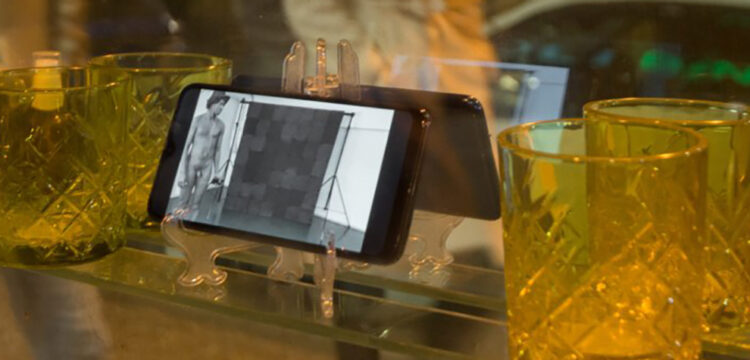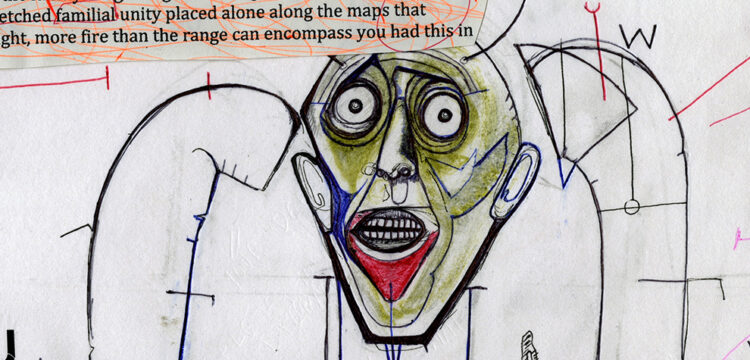What Does Transparency Keep Obscure?
On Gaia De Megni’s AFELIO
Sunday 24 September 2023 Xing presents AFELIO, a cycle of performative acts conceived by Gaia De Megni and performed by Gloria Dorliguzzo (also author of the choreographic adaptation) and Marta Tabacco. The performances will take place every hour on the hour, from 5 to 9 pm, in Piazza VIII Agosto in Bologna. This new Xing production premieres within the Hole series, an experimental format of occupation and activation of non-institutional places as a temporary redefinition of a public space.
AFELIO is a cycle of performative acts conceived by Gaia De Megni and performed by Gloria Dorliguzzo (also author of the choreographic adaptation) and Marta Tabacco, produced by Xing. The project is based on a research on the military context and its rituals, focusing on the complex of perfected actions carried out on the guard post of the Arlington National Cemetery, Virgina (USA) for the Changing of the Guard ceremony.
In his latest documentary Theatre of Thought, Werner Herzog concludes the extensive and provoking journey of the film through the human brain, interrogating himself (and the viewers too) on a seemingly minor topic; we’re in Athens, on Syntagma Square, right in front of the Greek Parliament Building, where the traditional Evzones Changing of the Guard takes place. After mapping the most complex inventions our mind has been capable of designing, Herzog finds himself intrigued by the choreography performed by the soldiers. What is about the redundant grandiosity of those ancient gestures that keeps capturing our eyes and mind? The fascination lies in observing the effort dedicated to such a simple set of actions, to create something that goes beyond pure functionality.
Rituals are indeed the most unnecessary and yet profoundly charged gestures we, as humans, display to give and convey meanings. For it to happen, an orchestrated combination of intentions, order, precision, and object-human relations must be arrayed. Thus, in this fertile merging of futility and significance, rituals become generators of signs. What happens if we play around with those arrangements of signs to produce a detournement of some sort? Art has always been the way par excellence to address unresolved questions and operate this shift.
Such a shift took place on September 24th in Piazza VIII Agosto in Bologna, where Afelio (2023)—a cycle of performances conceived by artist Gaia De Megni, presented by Xing and performed by Gloria Dorliguzzo and Marta Tabacco—was enacted. The performance is part of Hole, a wider program of artistic interventions promoted by Xing, which from time to time invites artists to occupy and activate non-institutional places as a temporary redefinition of the public space. In Bologna, from 5 to 9pm, every hour on the hour, the two performers walked from the right side of the square all the way to the left, stopping halfway to repropose the gestural score of the inspection and changing of the guard as it is carried out at the Arlington National Cemetery, Virginia (USA).
If it’s true that rituals are deeply rooted and shaped in relation to the context they’re performed in, it goes without saying that no exact replica it’s possible nor interesting to repropose. There’s nothing funereal about Piazza VIII Agosto in Bologna, and it is far from being a canonical ornate and sumptuous square, quite anonymous instead. With no impressive monuments to embellish it, it’s a place of transit and has a huge parking lot underground. Although, in a curious coincidence, apparently back in the Napoleon era, it was destined to battle drills and military parades. Knowing this, looking back at the image of the two performers emerging from the parking lot below feels as witnessing the appearance of some ghosts from history. But maybe they belong somewhere else again, completely outside of history, the uniforms they’re wearing suggesting it, tailored in such a way not to be ascribed to any specific military group. They surely belong outside of a dominant history that saw women unpreferable to join the army. Nevertheless, the performance does not propose any simplistic equation between them being women and an easy notion of female empowerment, and neither I want to—the military is a field imbued with such a level of violence that any appropriation of its codes would result very slippery. But there is undoubtedly a different kind of grace to their bodies, a defined sense of rupture about seeing two women in such a place. [1]
Besides the location and the figures performing, the most evident and meaningful difference with the original reference regarded the weapon; the two performers were, in fact, maneuvering a glass sculpture in the shape of a rifle M16A2 model, one of the most precise weapons used by the US army and employed in the Vietnam War, relegated today to a mere object of military etiquette. [2]
The only time I got a chance to hold a rifle, what struck me the most was the heaviness of the object. When you seize a weapon like that in your hands, you realize it takes a certain level of both physical and mental intentionality to manage it, let alone to use it. But it’s not about the heaviness—the M16A2 model is, for instance, considered a lightweight weapon—as much as it is about the impenetrability of its functioning; when you see a knife, there’s very little doubt on the way its shape can be harmful to your body, there’s a cruel and oddly reassuring evidence to it, but with a firearm the deathly mechanism is somehow hidden, domesticated behind a perfectly designed device. In Gaia De Megni’s performance, this impenetrability is defused by the revised transparency of the rifle, that we observe firmly handed by the two women. This domesticated version of the weapon appears harmless, docile and yet sharp, looking for no target. Of that lethally threatening object all that is left is a fragile and transparent silhouette. How this new transparency affects our perception of the action? Or, quoting American philosopher Judith Butler, “what does “transparency” keep obscure?” The question kept circling around my head as I saw the performance being repeated over and over again.
When the two performers first appeared on the square, facing each other, the sun was still shining up in the sky, making the transparent silhouette of the weapon almost imperceptible to the eye. The impression one had was as if the two women were either challenging each other or getting involved it what almost felt as a ritual of attraction. It looked like they were testing the water, in that rhythmic proceeding, looking to conquer each other’s favor. While the one holding the weapon came off inevitably as more dominant, they gradually went on to exchange roles. There was something both extremely serious and strangely playful in their gestures, making it seems like they were maneuvering a toy weapon, somehow unprepared for or uninterested in its real use. The look on their faces, measuring the seize of the rifle, inspecting every inch of it, was a combination of wonder and disbelief, as if they were silently asking themselves “What is this object we’re holding?”. With nothing to prove to the other, they were standing on a threshold, in a tense space of unity. The two performers were not looking at the weapon anymore, they were looking through it. They were de facto two disarmed soldiers. Deprived of its recognizable features, the rifle ceases to be a specific weapon, to become the epitome of any weapon, laying the ground for a number of issues.
One of visual artist that has more prominently investigated questions raised by wars in our current times has been, without doubt, German filmmaker Harun Farocki. Through his body of works, Farocki has been capable of identifying the vanishing nature of contemporary wars, proving it to be mainly related to the dematerialization of the tools and methods employed to fight them, this not affecting in the slightest way their destructive power, but rather turning them into even more subtle incubators of atrocities.
In one of his earliest films, Inextinguishable fire (1969), an agitprop critique of the Vietnam War and the role of industry in the production of chemical weapons, the famous final scene sees a young man, the same actor, each time at a washroom sink, introducing himself as a worker, a student, an engineer. As an engineer, carrying a vacuum cleaner in one hand and a machine gun in the other, he says, “I am an engineer and I work for an electrical corporation. The workers think we produce vacuum cleaners. The students think we make machine guns. This vacuum cleaner can be a valuable weapon. This machine gun can be a useful household appliance. What we produce is the product of the workers, students, and engineers.”
With a humorous and yet irrefutable tone, the scene exposes the chameleonic nature of what a weapon is, identifying it both as a manufact and a symbol. As industrial products, weapons respond to the same capitalistic logic of profit that guarantees the circulation of all products, likewise, every object can be assimilated to a weapon for its modes of production, resulting in a world populated by interchangeable signs of wars and capitalism in disguise.
If we accept this scenario, the transparent rifle held by the performers opens a crack. Despite its transparency, or precisely because of that, it stands as a symbol hard to decipher. Because there is a difference between transparency and legibility; the highest transparency, in fact, can prove to be way more enigmatic than any recognizable visibility. In that square, in the gestures mechanically repeated by the performers, above all, is the field of visibility that is called into question and consequently our very possibility of understanding what we see. What’s there to observe and to investigate? Over five hours, people gathered in the square, certainly attracted by those unexpected presences they could recognize as soldiers, some of them wondering whether it was a film being shot or a real event, but in the end, they stayed trying to grapple with the nature of that piece of glass the two were manoeuvring, proving that the absence of something calls for attention even more than its presence. To rephrase it through the illuminating words of French philosopher Paul Virilio “Just as weapons and armor developed in unison throughout history, so visibility and invisibility now began to evolve together, eventually producing invisible weapons that make things visible.”
The powerful epiphany of Afelio lies precisely in forcing our gaze to face its limit. As art at its best should do, it doesn’t offer answers but provokes an ever-changing chain of questions.
[1] The Tomb of the Unknown Solider at Arlington National Cemetery in Arlington, Virginia, experienced an all-female guard change for the first time in October 2021, in its nearly 100-year history.
[2] Gaia De Megni is not new to address in her work the military imagery. See also her video and performance work Il Mito dell’eroe (2021). In her words, the work is “a metaphor about contemporaneity where people have to perform themselves to relate to society standards.”





